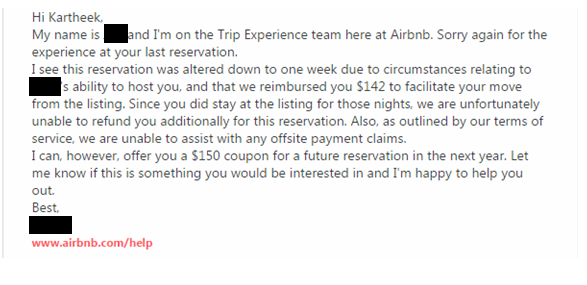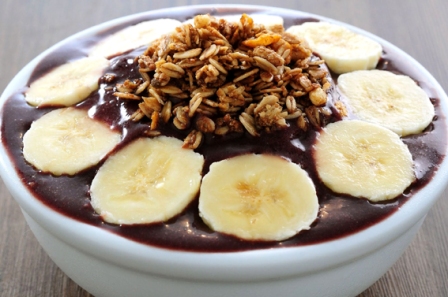These past couple weeks have been so draining physically, mentally and emotionally for me. My situation has nothing to do with my friends and family, my job, my hobbies or any of the other usual suspects.
Nope.
This particular instance of pain was brought about my decision to use Airbnb to find a short-term sublet in lieu of a year-long lease. As most of my friends know, I was most recently a Hell’s Kitchen resident for two years. Dealing with the constant noise and foot traffic was a hassle, but I loved the neighborhood. Amazing restaurants of every cuisine, the central location, the transportation infrastructure to get anywhere in the city quickly, and the convenience of having everything I needed a few blocks away from me (including my jiu jitsu school, which was located in my apartment building). However, as all good things often come to an end, so did this one – my lease ended January 2016.
I did not want to commit to another 12 month lease for many reasons: as many of you know, getting out of one will cost you a lot of $$$. Finding a short-term sublet as a bridge to a longer term solution was simply the right move.
I visited Craigslist and sites such as Sublet.com, but I encountered shady brokers asking for exorbitant fees on top of the advertised rental rates. Shortly thereafter, I came across Airbnb’s sublet program. This option made sense on the surface – I could find a place, place a request for it and get it confirmed in a matter of hours. Simple, right? Airbnb does charge a guest service fee of 6% to 12% and a host service fee of 3%, most of which smart hosts pass on to the guests. However, ~15% seemed like a much better deal than the 50%+ broker fees I was running into.
As I was scanning Airbnb for listings in Midtown, I came across a 1 bedroom apartment in a doorman building with a gym for $3,300 for 37 days! I know this seems like a lot for my non-NYC friends, but trust me: this is a solid price!
A couple things caught my eye, however. The host had only a few identity verifications in his profile and no ratings. “Ok, he must be a new host. If he lives in such a nice building, he probably isn’t a scumbag,” I thought.
So, I went ahead and booked!
And now starts the sad saga.
After the host (let’s call him Harry) accepted the reservation, he notified me that there would be an additional $250 application fee that did not appear in the listing. He was not willing to cover this. Strike one.
After pondering on whether to pay this fee for a couple days, I accepted his offer. In my note to him, I asked him to confirm the reservation. He confirmed and sent me the application. I filled it out and returned it to him the next day and asked him for next steps.
I waited a day, then another day, then another…ultimately, I waited 5 days.
Harry finally responded 3 days out from when the reservation was supposed to start (this was January 26th with the reservation scheduled to start on January 29th). He claimed he had no access to Internet during this time. Ok, whatever. We submitted the application 3 days out to building management, despite the application form requiring potential tenants to submit at least 5 business days out.
Whether I was approved or not by management, I picked up the keys from Harry on January 29th. When I picked up the keys, I noticed the bathroom was dirty and the bedroom was dusty. As I left, I asked him to clean the place, which he promised to do.
I returned to my still-dirty new home on January 30th with most of my belongings and slept there for the first time that night. Throughout the night, for some reason, the toilet would not stop flushing.
I awoke the next morning to see a garbage can full of toilet water. Fuming, I realized that Harry had already known the toilet had issues, hence why he placed the garbage can at the site of the leak. Later on that morning, as I was brushing my teeth, I noticed the bathroom sink was clogged. As I left the apartment, I told the doorman to send someone up to fix the bathroom and the sink. Strike two.
Later that afternoon, I texted Harry to send a professional cleaner to clean up this dingy apartment. He texted me back refusing to do so and asked me for a security deposit, because the building had charged him to repair the toilet and bathroom sink. Out of left field, he also asked me to compensate him for the electricity bill at the apartment! Furthermore, he refused to acknowledge the poor condition of his apartment, claiming some BS that the apartment was rented on an “as is” basis so, per his argument, it was okay for all these issues to exist. Strike three.

The leaking toilet garbage can still filling up!
Furious, I refused to pay these extra fees and confirmed with Airbnb customer support that I was not obligated to pay Harry anything more than what I’d already paid him. I told him to discuss his perspective with Airbnb, which he refused to do. He tried to play hardball with me with his fee proposal, claiming that he would kick me out of the apartment if I didn’t pay him this security deposit. As this situation dragged on, I also noticed the dishwasher was not turning on and the kitchen sink was clogged. As you’d expect by now, he refused to fix either appliance. Throughout the process, I called Airbnb customer support at least twice a day, outlining my complaints and all they really did was to tell me to file a claim with their resolutions department. Strike four.
On February 3rd, I filed a claim with Airbnb’s resolutions department, asking for a full refund. The policy of the resolutions department is not to get involved until 72 hours after a case is opened. Expecting to win this case and move out sometime during the weekend, I started to look for new places to move into. As it turned out, there was a company within the building that leased short-term rentals. I asked my girlfriend to speak with them and look at available apartments on February 5th.
She explained my situation to the agent. The agent quickly informed her that it was a violation of building policy for Harry to rent his apartment out on Airbnb. Soooo, it was illegal for me to be in the building in the first place! Strike five.
I immediately called Airbnb and explained my situation. My agent instantly cancelled the rest of the reservation. I left work at 1 PM that Friday to book a new place and to pack my things. Weary of Airbnb, I went to Booking.com instead and found a nice apartment west of Manhattan. I booked it in a matter of minutes. Was it expensive? Yes. However, after the hell I’d been through during that week, I was absolutely willing to pay their rate.
Packing and moving for a second straight week was obviously very taxing physically and mentally. Despite moving to Harry’s apartment the weekend before, I still had to pack five 20” x 20” x 20” boxes (three of which I shipped back to my parents’ home in Virginia) and four suitcases worth of clothes. Absolutely worn down, I ordered two UberXLs and shipped out to greener pastures, which is where I sit now on a comfortable couch typing this piece.
So what are the takeaways from this story?
1) We’ve all heard some of the Airbnb horror stories online and, while my story is not as bad as some out there, there is a lot left to be desired with Airbnb in times of customer service.
For starters, Airbnb agents have an infuriating habit of passing the buck on to someone else (in this case, the resolutions department). The agent from the building also noted that the building had cracked down on and evicted Airbnb users in the past – Airbnb should’ve made a note of this in the system and never allowed the host to post this listing in the first place. They also refused to cover a hotel for me on the night of February 5th, because the cancellation didn’t happen in the evening. On February 8th, after I moved out, they informed me that, despite all the issues he caused, Harry would still able to review me on Airbnb – this is quite stupid as this will possibly impair my ability to rent on Airbnb in the future.
I also just got this note back from Airbnb regarding any potential refund from this host.

Great! So a $150 coupon toward a service I may not be able to use if Harry gives me a 1 star rating!
However, I have to give Airbnb credit for cancelling the reservation immediately once I informed them about my impending eviction and for providing me with a $150 credit to move my stuff to the new apartment (so, fortunately, the two UberXLs were covered). The hold time on the support line is short and some of the agents follow up via email after the call.
2) Never book on Airbnb with a host who has no ratings under his name. The price may seem great, but the risk is not worth it. Instead, book with hosts with 4 or 5 star ratings and/or those who have the Airbnb “Superhost” certification. Sure, you may have to pay a few extra bucks, but peace of mind is totally worth it.
3) Pay close attention from the onset for warning signs. I should’ve passed on the reservation when Harry refused to cover the application fee. It was something that was not displayed in the listing. At best, Harry did not know how Airbnb worked. At worst, Harry is a deceitful chump. The latter is probably true here, given everything that happened.
4) Regarding Shyp, I would grade them out as a C for their service. For those of you who don’t know what Shyp is, it is a service that will pick up, package and send your items for $5 + the lowest rate offered by UPS, USPS and FedEx. Sounds awesome in theory right?
Well, the service is a bit wonky. The credit card verification technology in the app will reject perfectly good credit cards, I repeatedly received incorrect estimates on courier arrival time, courier orders appeared and mysteriously disappeared minutes after they were placed in the app, and nowhere in the app is it clear that they don’t pick up packages over 50 pounds.
They did ultimately get the job done and I was able to check on the status of my packages. Odds are they will fix the kinks over time. After all, the company is less than three years old!
5) I’m a huge Tim Ferriss fan and his signature book The Four Hour Workweek is a must-read for anyone focused on self-improvement. I recommend buying it right now if you haven’t read it already!


The 4-Hour Workweek: Escape 9-5, Live Anywhere, and Join the New Rich
The Buy It There (BIT) method when moving around is one of the concepts he advocates. He preaches rather than traveling around like a pack mule, throw away unnecessary items and set aside a fund to buy items when they are actually needed.
I probably would earn a D if I were being graded on how well I followed this method. Because of my Indian heritage, a part of me dies every time throw something away. I ultimately took 10+ boxes/suitcases with me when I moved out, but I did force myself to use the BIT method enough to use Shyp to send a few boxes home to Virginia. Doing so saved me from having to order a third UberXL, which would have been a nightmare because I had only one friend helping me.
Did you enjoy this post? Email me at theeksthoughts@gmail.com to get notified ASAP when I publish the next blog post! How have your experiences with Airbnb or rentals in general been like? Comment below 🙂





















